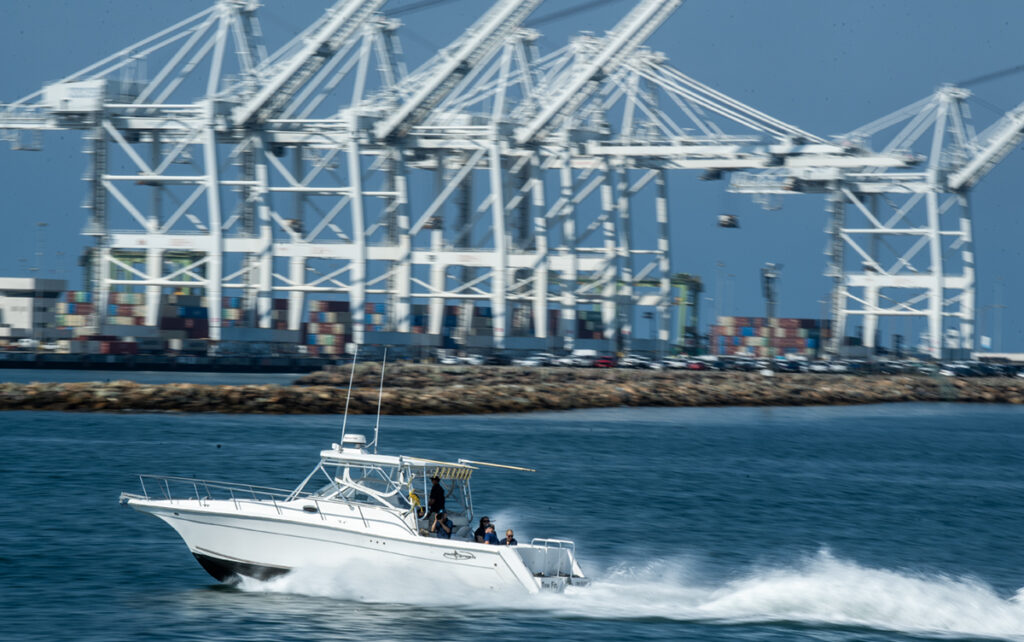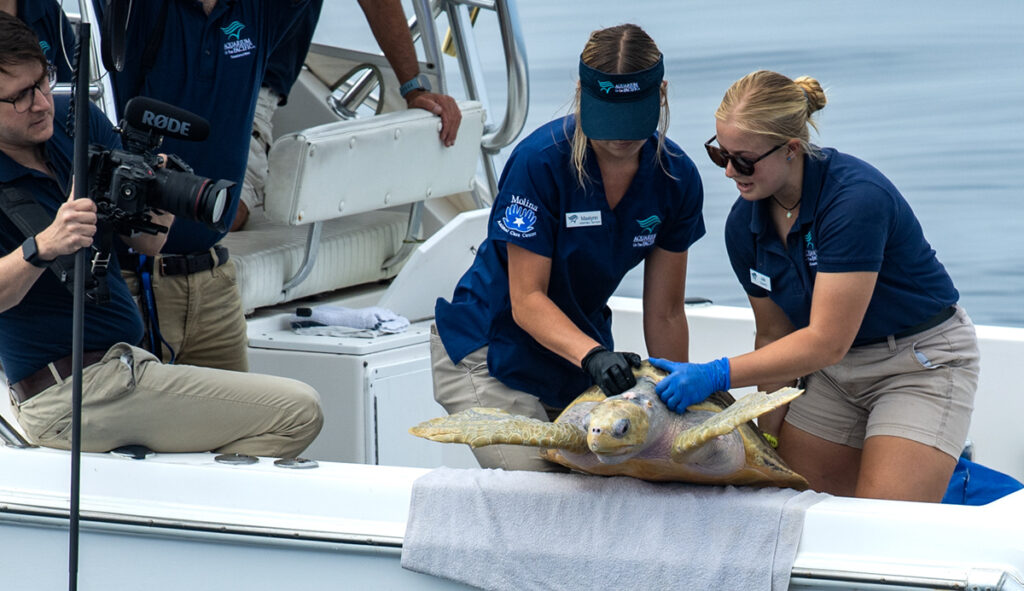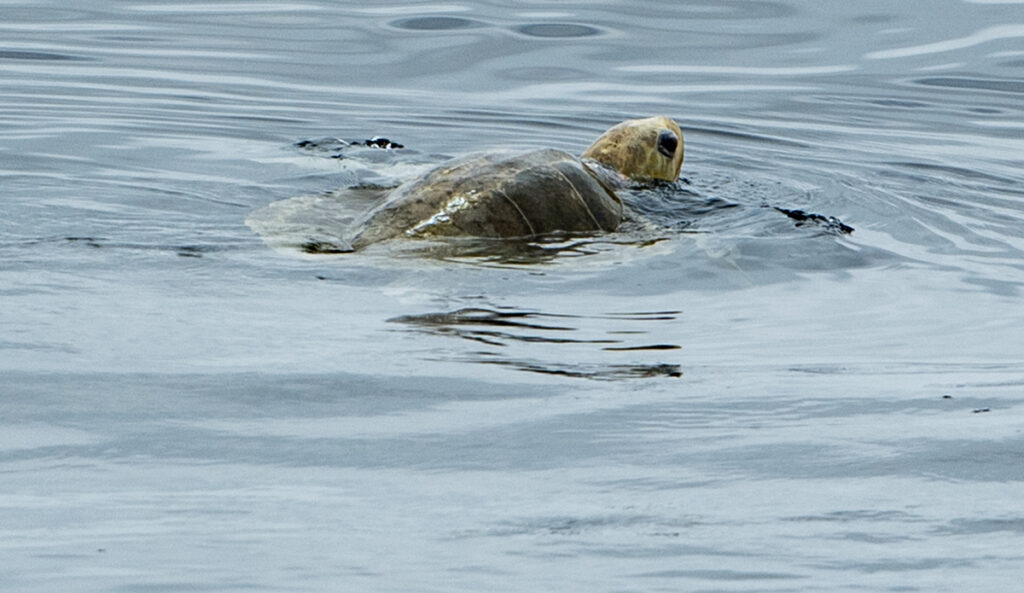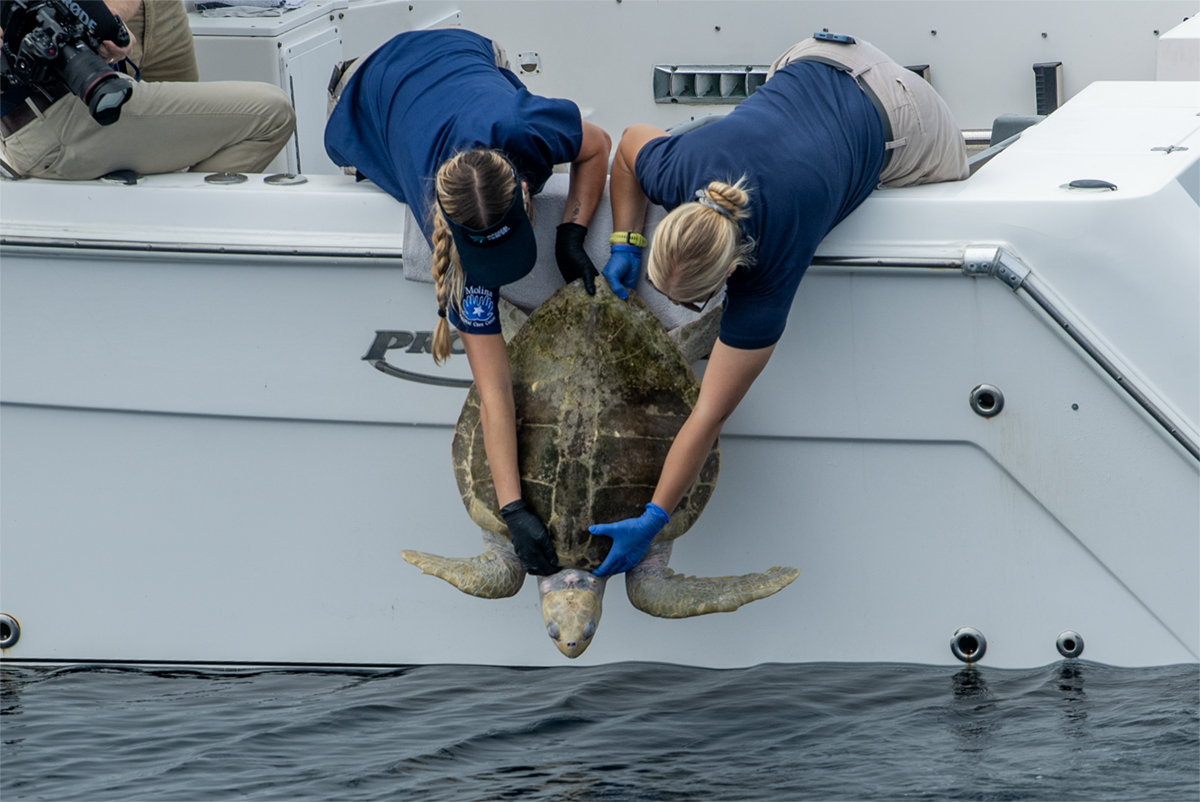A rehabilitated sea turtle was set free several miles off the coast of Long Beach on Monday after seven months of intensive veterinary care at the Aquarium of the Pacific.
The creature’s recovery was celebrated with a ceremonial release and applause from about two dozen witnesses — donors, media and aquarists — in a tour boat that followed the small watercraft carrying the turtle.
Aquarists say the turtle was discovered stranded at Pismo Beach last December. Responders who found her described a number of painful injuries, including several deep cuts, as well as being dehydrated and starved.
“In the crook of her front flippers, it looked like someone had just scrubbed it with sandpaper,” said Louise Leborgne, a veterinarian technician with the Aquarium of the Pacific.
A closer examination found the turtle — specifically an olive ridley sea turtle — must have traveled far from her typical migratory pattern into colder waters that shocked her tropically inclined system.
“When they get that cold, everything starts to shut down,” Leborgne said. “Their digestive system shuts down, their heart rate slows down, their breathing slows down. They’re very sluggish. It’s most likely she didn’t climb up onto land. It’s most likely she washed up onto land and was just stuck there, not able to push herself back into the water.”
After she was finally rescued, the turtle was moved into a veterinary emergency ward at the Aquarium of the Pacific, where staffers treated her for about seven months.


Fully recovered and 13 pounds heavier than when she checked into the veterinarian ward, the turtle was cleared several weeks ago for a return to the wild.
“A lot of that was dependent on her really being able to know that she could heal the rest of the way on her own,” said Stacy Hammond, a senior aquarist.
The turtle, named only internally by aquarium staff, is the fifth to be rescued in the past year, but only the fourth olive ridley turtle taken in since the Long Beach facility opened in 2000.
Staff continue to nurse two sea turtles they discovered in the San Gabriel River, both injured after being snared in fishing lines.

Officials say this rescue was another example of why they need more holding space, mentioning the construction that is underway for the aquarium’s new 4,000-gallon tank for on-site turtle rehabilitation at its Molina Animal Care Center.
“We always make it work, but it’s not always easy,” Hammond said.
Still officially listed as endangered, the olive ridley inhabits tropical and warm waters of the Pacific, Atlantic and Indian oceans, feeding on crustaceans, jellyfish and mollusks. Many nest on beaches along Mexico’s Pacific coast, mostly in Oaxaca state, or in Hawaii.

Researchers say its primal imprint and migratory patterns are possibly related to the Earth’s magnetic field, wave patterns, currents and singular smells.
A few minutes after her release, and months after she made her stop in Long Beach, the turtle came up for a gulp of air about 30 yards away, drawing brouhaha from the crowd.
Seconds later, it submerged into the green, slow-moving water and was gone.

